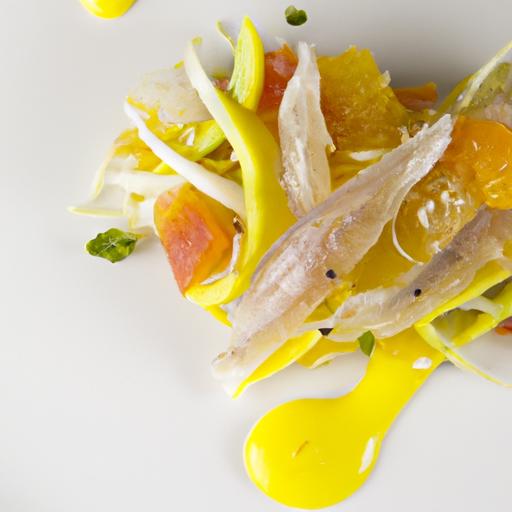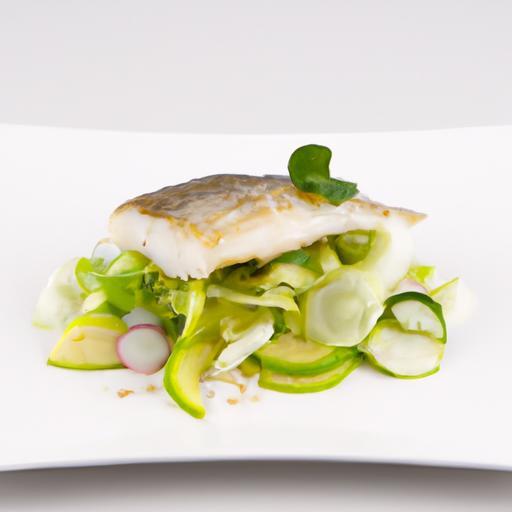Imagine biting into a piece of smoked fish, where every tender flake bursts with rich, smoky goodness that dances on your palate. What if I told you that the secret to this unforgettable flavor lies not just in the wood chips or smoking time, but in a delicate, almost invisible layer known as the pellicle? This natural film formed on the fish’s surface before smoking is the unsung hero of flavor development, texture, and color. In this article, we’ll unravel the mystery of the pellicle-exploring what it is, how to create it, and why it holds the key to mastering the art of fish smoking. Prepare to elevate your culinary craft and unlock the smoky perfection you’ve been craving.
Mastering the Art of Pellicle Creation for Optimal Smoke Absorption
Pellicle in fish smoking begins with understanding the magic that happens on the surface of your fish-a tacky, semi-dry layer that acts like a flavor sponge. This crucial stage allows the delicate yet deep flavors of smoke to beautifully penetrate, elevating your smoking game from simple to sensational.
Prep and Cook Time
- Preparation: 15-30 minutes (plus air-drying time)
- Cook (Smoke) Time: 1-3 hours depending on fish type and smoker temperature
Yield
- Serves 4-6 portions of smoked fish
Difficulty Level
- Medium – Requires patience and attention to detail
Ingredients
- 2 lbs fresh fish fillets (salmon, trout, or mackerel preferred)
- 3 tablespoons kosher salt
- 2 tablespoons brown sugar
- 1 teaspoon black pepper (freshly ground)
- Optional aromatics: 1 teaspoon crushed juniper berries, 1 teaspoon dried dill
- Ice water for rinsing
- Clean wire rack or perforated tray for drying
Instructions
- Brining the Fish: Combine kosher salt, brown sugar, and optional aromatics in a bowl. Submerge the fillets in a salt-sugar mixture or create a wet brine by dissolving the mix in cold water. Brine the fish for 4-6 hours in the refrigerator to lightly cure and draw moisture to the surface.
- Rinse Gently: Remove the fish from the brine and rinse under cold running water to wash off excess salt. Pat dry carefully using paper towels.
- Air-Drying for Pellicle Formation: Place the fish skin-side down on a clean wire rack situated in a cool, well-ventilated area or refrigerator. Allow the surface to dry until a tacky, semi-dry film forms-this can take anywhere from 1 to 3 hours depending on humidity and temperature.
- Feel for the Pellicle: The perfect pellicle should feel dry to touch but still slightly sticky-this is the hallmark of successful preparation and optimal smoke absorption.
- Smoking Time: Proceed immediately to smoke your fish at low temperatures (175°F to 200°F) to lock in moisture and flavor, ensuring the pellicle aids in creating a beautiful smoky crust.
Chef’s Notes
- Why the Pellicle Matters: It acts as a natural barrier, retaining juices inside while providing a perfect surface for smoke particles to cling to.
- Tool Tip: Use a high-quality wire rack, not plastic, to allow airflow beneath the fish for even drying. A fan can speed up pellicle formation in humid environments.
- Common Mistake: Don’t rush drying or smoke fish that’s still wet-wet skin equals poor smoke adhesion and a soggy texture.
- Seasoning Variations: Add herbs like dill, thyme, or citrus zest to the brine for extra aromatic complexity.
- Make-Ahead: You can prepare pellicled fish in advance, refrigerate uncovered overnight, and smoke the next day for convenience.
Serving Suggestions
Present smoked fish with vibrant accompaniments to highlight its complexity. Serve atop a bed of fresh arugula and radish slices, garnished with lemon wedges and a sprinkle of chopped fresh herbs like chives or dill. Drizzle with a light mustard-dill sauce or herb-infused olive oil for that perfect balance of smoky, savory, and fresh.

| Nutrient | Per 100g |
|---|---|
| Calories | 150 |
| Protein | 23g |
| Carbohydrates | 2g |
| Fat | 5g |
For more on how to tailor your smoking technique and recipes, explore our article on Cold Smoking vs Hot Smoking: Which is Better for Your Fish?. Also, check out the Smoking Meat Forums for in-depth community insights about pellicle and smoking science.
Q&A
Q: What exactly is a pellicle in the context of fish smoking?
A: Think of the pellicle as the fish’s flavor passport-it’s a tacky, translucent skin that forms on the surface after the fish has been properly dried. This natural protein layer acts like a magnet for smoke, helping it cling beautifully to the fish and infuse it with that irresistible smoky aroma.
Q: How does the pellicle form, and why is it important?
A: After curing or brining, the fish needs to air-dry in a cool, ventilated spot. During this drying phase, moisture evaporates from the surface, and the pellicle forms as proteins coagulate and create a slightly sticky coating. Without this pellicle, smoke struggles to adhere well, resulting in fish that’s less flavorful and less visually appealing.
Q: Can I smoke fish without forming a pellicle first?
A: You could, but it’s a smoky shortcut that often leads to disappointing results. Without that protective and adhesive pellicle, the smoke’s flavor won’t fully penetrate, leaving your fish bland and pale instead of rich and golden.
Q: How long should I let the pellicle develop before smoking?
A: Typically, 1 to 4 hours of air-drying is ideal, but it depends on humidity and temperature. The fish should feel dry to the touch, with a slight tackiness-not wet or slimy. Patience here is your flavor’s best friend.
Q: Does the type of fish affect pellicle formation?
A: Absolutely! Fatty fish like salmon form pellicles more readily and tend to absorb smoke flavors deeply, while lean fish may need more careful drying. Knowing your fish type helps you tailor the process for that perfect smoky kiss.
Q: Are there any tips to help create the perfect pellicle?
A: Yes! Use a cool, breezy spot with low humidity-think an open window or a well-ventilated fridge shelf. Don’t cover the fish while it dries, and ensure it’s evenly spaced for air circulation. Some smokers even use fans to speed up pellicle formation without drying out the fish too much.
Q: Is the pellicle only important for cold smoking, or does it matter in hot smoking too?
A: While the pellicle is crucial for cold smoking to capture delicate smoke flavors, it also benefits hot smoking by helping to seal in moisture and develop a rich smoky crust. So no matter your method, the pellicle is your flavorful ally.
Q: In sum, why should I care about the pellicle?
A: Because it’s the invisible canvas for your culinary masterpiece. The pellicle transforms simple smoked fish into an aromatic, flavorful delight, giving you tender, smoky bites with each forkful. Skip it, and you skip the secret ingredient to perfection.
The Way Forward
As the delicate aroma of smoked fish fills the air, it’s easy to overlook the unsung hero behind that perfect flavor-the pellicle. This thin, tacky layer forms a vital bridge between the flesh and the smoke, ensuring every bite carries that deep, irresistible smokiness. Understanding and mastering the pellicle isn’t just a step in the smoking process; it’s the secret handshake to unlocking a world of rich, nuanced taste. So next time you prepare to smoke fish, remember: patience in forming the pellicle is patience for perfection. Your palate will thank you.


